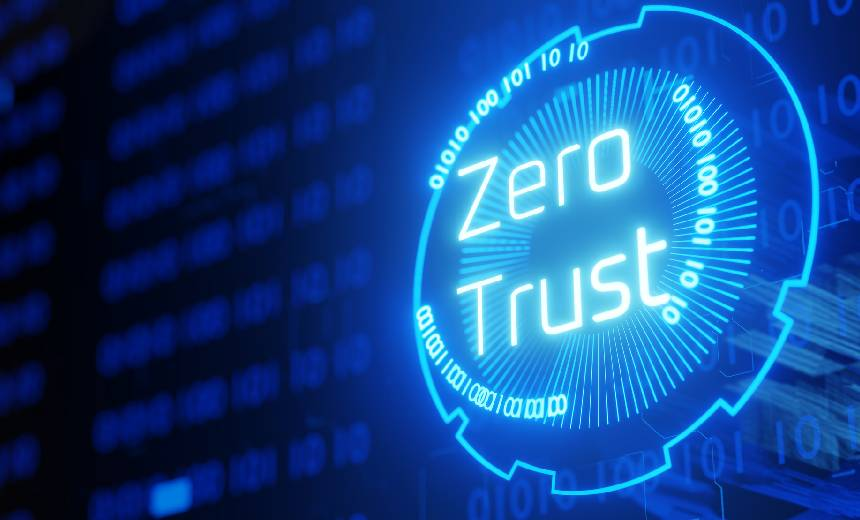 Network Security
Network SecurityZero Trust Security: Why Companies Are Adopting It
August 20, 2025 • 9 min read
Trust no one, verify everything. Zero Trust is becoming the new standard for network security.
The traditional security model of "trust but verify" is no longer sufficient in today's complex threat landscape. Zero Trust architecture represents a fundamental shift in cybersecurity strategy, moving from perimeter-based defense to identity-centric protection that assumes breach and verifies explicitly.
What is Zero Trust?
Zero Trust is a security framework requiring all users, whether inside or outside the organization's network, to be authenticated, authorized, and continuously validated before being granted access to applications and data.
Core Principles of Zero Trust
1. Verify Explicitly
Always authenticate and authorize based on all available data points.
2. Use Least Privilege
Limit user access with just-in-time and just-enough-access principles.
3. Assume Breach
Minimize blast radius and segment access to prevent lateral movement.
Key Components of Zero Trust Architecture
1. Identity and Access Management
- Multi-factor authentication (MFA)
- Identity governance and administration
- Privileged access management
- Behavioral analytics
2. Device Security
- Endpoint detection and response (EDR)
- Mobile device management (MDM)
- Device health compliance checking
- Secure configuration enforcement
3. Network Security
- Micro-segmentation
- Software-defined perimeters
- Encrypted communications
- Network analytics and monitoring
4. Application Security
- Application segmentation
- Secure access service edge (SASE)
- API security controls
- Container and workload protection
5. Data Security
- Data classification and labeling
- Encryption and tokenization
- Data loss prevention (DLP)
- Rights management and governance
Implementing Zero Trust
1. Identify Protect Surface
- Critical data, assets, applications, and services (DAAS)
- Understanding data flows and dependencies
- Mapping business processes and access requirements
2. Map Transaction Flows
- How resources interact across the environment
- Understanding normal and abnormal behavior patterns
- Documenting application dependencies and communications
3. Build Zero Trust Architecture
- Designing security controls around protect surface
- Implementing segmentation gateways
- Deploying policy enforcement points
4. Create Zero Trust Policies
- Defining access rules based on business needs
- Implementing least privilege principles
- Establishing continuous monitoring requirements
5. Monitor and Maintain
- Continuous security validation
- Regular policy reviews and updates
- Incident response and improvement
Benefits of Zero Trust
1. Enhanced Security
- Reduced attack surface
- Better breach containment
- Improved threat detection
- Comprehensive visibility
2. Business Enablement
- Secure remote work capabilities
- Cloud adoption acceleration
- Digital transformation support
- Regulatory compliance facilitation
3. Operational Efficiency
- Simplified security management
- Automated policy enforcement
- Reduced complexity
- Better resource utilization
Common Implementation Challenges
1. Cultural Resistance
- Changing from trust-based to verification-based mindset
- Overcoming "this is how we've always done it" mentality
- Gaining executive buy-in and support
2. Technical Complexity
- Legacy system integration issues
- Application compatibility concerns
- Performance impact considerations
- Skills gap and training needs
3. Operational Considerations
- Policy management complexity
- User experience impacts
- Cost and resource requirements
- Measurement and reporting challenges
Zero Trust Use Cases
1. Remote Workforce Security
Securing access for distributed employees and contractors.
2. Cloud Migration
Protecting data and applications in hybrid and multi-cloud environments.
3. Third-Party Access
Managing vendor and partner access to critical systems.
4. Regulatory Compliance
Meeting requirements for data protection and access control.
5. Merger and Acquisition Integration
Securely integrating systems and data during organizational changes.
Industry Adoption Trends
- 72% of organizations planning or implementing Zero Trust
- 45% increase in Zero Trust adoption since 2023
- Healthcare and finance leading adoption rates
- Government mandates driving public sector implementation
Technology Ecosystem
1. Identity Providers
- Microsoft Azure AD
- Okta
- Ping Identity
- ForgeRock
2. Network Security
- Zscaler
- Palo Alto Networks
- Cisco
- Akamai
3. Endpoint Security
- CrowdStrike
- Microsoft Defender
- SentinelOne
- VMware Carbon Black
4. Data Security
- Microsoft Purview
- Varonis
- Proofpoint
- Digital Guardian
Future Developments
1. AI and Machine Learning
Enhanced behavioral analytics and automated policy enforcement.
2. Quantum Resistance
Preparing for future cryptographic requirements.
3. Extended Detection and Response (XDR)
Integration with broader security ecosystems.
4. Automated Compliance
Real-time regulatory compliance monitoring and reporting.
Implementation Roadmap
Phase 1: Assessment and Planning
- Current state analysis
- Protect surface identification
- Strategy development
Phase 2: Pilot Implementation
- Select use case implementation
- Technology evaluation
- Process refinement
Phase 3: Expanded Deployment
- Broader implementation
- Policy development
- Training and awareness
Phase 4: Optimization
- Continuous improvement
- Advanced analytics
- Automation enhancement
Measuring Success
- Reduced incident response times
- Decreased breach impact
- Improved compliance scores
- User satisfaction metrics
- Operational efficiency gains
Remember: Zero Trust is not a product but a strategy and mindset. Successful implementation requires careful planning, executive support, and ongoing commitment to the principles of verification and least privilege.
Organizations that embrace Zero Trust will be better positioned to protect their assets in an increasingly perimeterless world while enabling business innovation and growth.